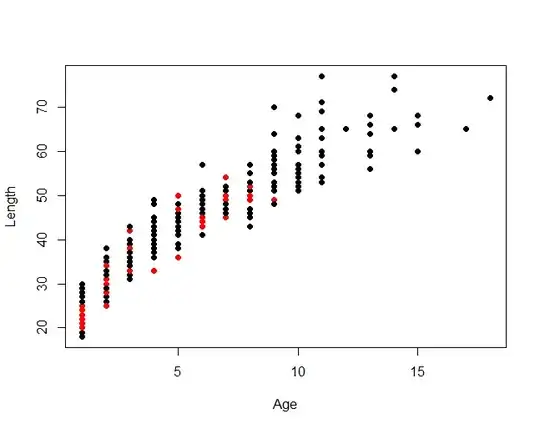I am trying to prove the statement:
If $X\sim\mathcal{N}(0,\sigma_1^2)$ and $Y\sim\mathcal{N}(0,\sigma_2^2)$ are independent random variables,
then $\frac{XY}{\sqrt{X^2+Y^2}}$ is also a Normal random variable.
For the special case $\sigma_1=\sigma_2=\sigma$ (say), we have the well-known result that $\frac{XY}{\sqrt{X^2+Y^2}}\sim\mathcal{N}\left(0,\frac{\sigma^2}{4}\right)$ whenever $X$ and $Y$ are independent $\mathcal{N}(0,\sigma^2)$ variables. In fact, it is more generally known that $\frac{XY}{\sqrt{X^2+Y^2}},\frac{X^2-Y^2}{2\sqrt{X^2+Y^2}}$ are independent $\mathcal{N}\left(0,\frac{\sigma^2}{4}\right)$ variables.
A proof of the last result follows by using the transformation $(X,Y)\to(R,\Theta)\to(U,V)$ where $x=r\cos\theta,y=r\sin\theta$ and $u=\frac{r}{2}\sin(2\theta),v=\frac{r}{2}\cos(2\theta)$. Indeed, here $U=\frac{XY}{\sqrt{X^2+Y^2}}$ and $V=\frac{X^2-Y^2}{2\sqrt{X^2+Y^2}}$. I tried to imitate this proof for the problem at hand but it appears to get messy.
If I haven't made any error, then for $(u,v)\in\mathbb{R}^2$ I end up with the joint density of $(U,V)$ as
$$f_{U,V}(u,v)=\frac{2}{\sigma_1\sigma_2\pi}\exp\left[-\sqrt{u^2+v^2}\left(\frac{\sqrt{u^2+v^2}+v}{\sigma_1^2}+\frac{\sqrt{u^2+v^2}-v}{\sigma_2^2}\right)\right]$$
I have the multiplier $2$ above as the transformation is not one-to-one.
So density of $U$ would be given by $\displaystyle \int_{\mathbb{R}}f_{U,V}(u,v)\,\mathrm{d}v$, which isn't readily evaluated.
Now I am interested to know if there is a proof where I can only work with $U$ and don't have to consider some $V$ to show that $U$ is Normal. Finding the CDF of $U$ doesn't look so promising to me at the moment. I would also like to do the same for the case $\sigma_1=\sigma_2=\sigma$.
That is, if $X$ and $Y$ are independent $\mathcal{N}(0,\sigma^2)$ variables then I wish to show that $Z=\frac{2XY}{\sqrt{X^2+Y^2}}\sim\mathcal{N}(0,\sigma^2)$ without using a change of variables. If somehow I can argue that $Z\stackrel{d}{=}X$, then I'm done. So two questions here, the general case and then the particular case.
Related posts on Math.S.E:
$X^2-Y^2/ \sqrt{X^2+Y^2}\sim N(0,1)$ when $X,Y\sim N(0,1)$ independently.
Edit.
This problem is in fact due to L. Shepp as I found out in the exercises of An Introduction to Probability Theory and Its Applications (Vol. II) by Feller, alongwith a possible hint:
Surely, $U=\frac{XY}{\sqrt{X^2+Y^2}}=\frac{1}{\sqrt{\frac{1}{X^2}+\frac{1}{Y^2}}}$ and I have the density of $\frac{1}{X^2}$ at hand.
Let's see what I could do now. Apart from this, a little help with the integral above is also welcome.
